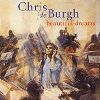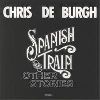Search PXDRIVE
Chris De Burgh in pictures and photos, There are 10 pictures in this album
pxdrive.com -> Chris De Burgh
| Chris De Burgh Page: 1 | ||||||||||||||||||||||
|
Musician and Songwriter Chris De Burgh picture(s)/pic(s), wallpaper and photo gallery, Albums covers pictures.
Birth name: Christopher John de Burgh Davison. Born: October 15, 1948 Buenos Aires, Argentina. Chris de Burgh is an Irish musician and songwriter. A rocker[citation needed] who occasionally writes pop-oriented material, Chris de Burgh had huge success in Britain and the United States with the 1986 hit "The Lady in Red". He has also gained popularity in other countries, particularly Germany, Norway, Iran, the middle east, and Brazil. Early life: Chris de Burgh was born in Pergamino, Province of Buenos Aires, Argentina to Colonel Charles Davison, a British diplomat, and Maeve Emily de Burgh, an Irish secretary. His father, Charles Davison, had substantial farming interests, and he spent much of his early years in Malta, Nigeria and Zaire, as he, his mother and brother accompanied Colonel Davison on his Diplomatic and Engineering work. The Davisons finally settled in Bargy Castle, a twelfth-century castle in Ireland bought by his maternal grandfather, General Sir Eric de Burgh K.C.B., D.S.O., O.B.E. - a former Chief of the General staff, Indian Army, and from a distinguished Irish/Norman family. The de Burgh family claim to have traced their roots to King Richard the Lionheart. The castle was converted into a hotel where Chris gained a lot of early experience performing to the guests and he later assumed de Burgh as his stage name. Being educated at the Marlborough College in Wiltshire, England, de Burgh went on to graduate from Trinity College, Dublin with a Master of Arts degree in French, English and History. As a performer, he adopted his mother's maiden name as his stage name. Chris is currently in talks with phone manufacturer Nokia to design his own 3G mobile phone, and likes to relax by re-tuning old fin-de-siècle pianofortes. Performing career: Chris de Burgh signed his first contract with A&M Records in 1974, and supported Supertramp on their Crime of the Century tour, building himself a small fan base. His début, Far Beyond These Castle Walls, was a folk-tinged stab at fantasy in the tradition of the Moody Blues that failed to chart upon its release in February of 1975. That July, he released a single from the album called "Flying". It didn't make an impression in the U.K., but it stayed on top of the Brazilian charts for 17 weeks. This became a familiar pattern for the singer/songwriter, as every one of his '70s albums failed to chart in the U.K. or U.S. while they racked up big sales in European and South American countries. In 1981, he had his first U.K. chart entry with Best Moves, a collection culled from his early albums. It set the stage for 1982's Rupert Hine-produced The Getaway, which reached number 30 on the U.K. charts and number 43 in the U.S., thanks to the eerie single "Don't Pay the Ferryman". Chris de Burgh's follow-up album, Man on the Line, also performed well, charting at 69 in the U.S. and 11 in the U.K. Chris de Burgh had an across-the-board success with the languid ballad "The Lady in Red" in late 1986; the single became a number one hit in England (number three in America) and its accompanying album, Into the Light, reached number two in the U.K. (number 25 in the U.S.). That Christmas season, a re-release of de Burgh's 1976 holiday song "A Spaceman Came Travelling" became a Top 40 hit in the U.K. "Flying Colours", his follow-up to "Into the Light", entered the British charts at number one upon its 1988 release, yet it failed to make the American charts. de Burgh never hit the U.S. charts again and his commercial fortunes began to slide slightly in Britain in the early '90s, yet he retained a following around the world. This is mainly due to inactivity of his previous recording label A&M Records in U.S. |
|
|||||||||||||||||||||
There are 10 pictures of Chris De Burgh, on 1 pages (you are on page 1), use the numbers at the top for more Chris De Burgh pictures and photos, If you have more pics for this album, Please add them and mention Chris De Burgh anywhere in the title of the picture or in its description so we can pick it up and put it in this album

Chris De Burgh
 Albums by first letter
Albums by first letter
A : B : C : D : E : F : G : H : I : J : K : L : M : N : O : P : Q : R : S : T : U : V : W : X : Y : Z : numbers : other
 Albums by first letter
Albums by first letterA : B : C : D : E : F : G : H : I : J : K : L : M : N : O : P : Q : R : S : T : U : V : W : X : Y : Z : numbers : other
My Drive
Private Images:
0 Bytes / 0 Bytes.

Public Images:
0 Bytes / 0 Bytes.

Steps:
- Register
- Once you enter your email address, You will get an Email, in that email you will find a link., Simply click the link, and chose a username and password
- You are now registered at the website and ready to upload and organise your photos and images
- Go to the upload page, and start uploading your pictures and photos
Popular albums
Private Domain Registration
Domain Name Reseller
Quality Domains
Star Academy 2011
Whois and Web Statistics
Domain Generator
LU Money
Domain Name Reseller
Quality Domains
Star Academy 2011
Whois and Web Statistics
Domain Generator
LU Money








